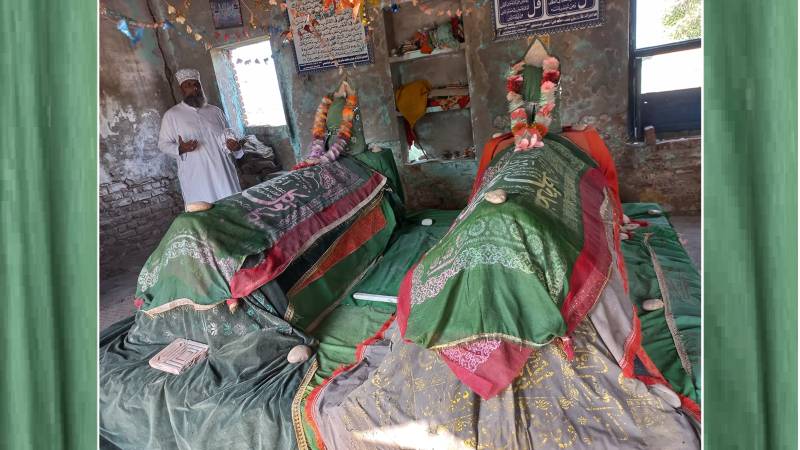
Garhi Yasin, in the Shikarpur district, is recognised for its significant contributions to Islamic scholarship and spiritual leadership. Numerous scholars and saints from this region have played a pivotal role in the dissemination of Islamic teachings. Among them, Maulana Muhammad Hashim Soomro and his descendants have been particularly prominent in the provinces of Sindh and Balochistan.
Maulana Muhammad Hashim Soomro, who founded the Islamic religious school or madrassah in Garhi Yasin – which produced several eminent Islamic scholars – was born in 1843 in Sindh’s Shahdadkot. He pursued his studies at the madrassah of Maulana Noor Muhammad in Shahdadkot.
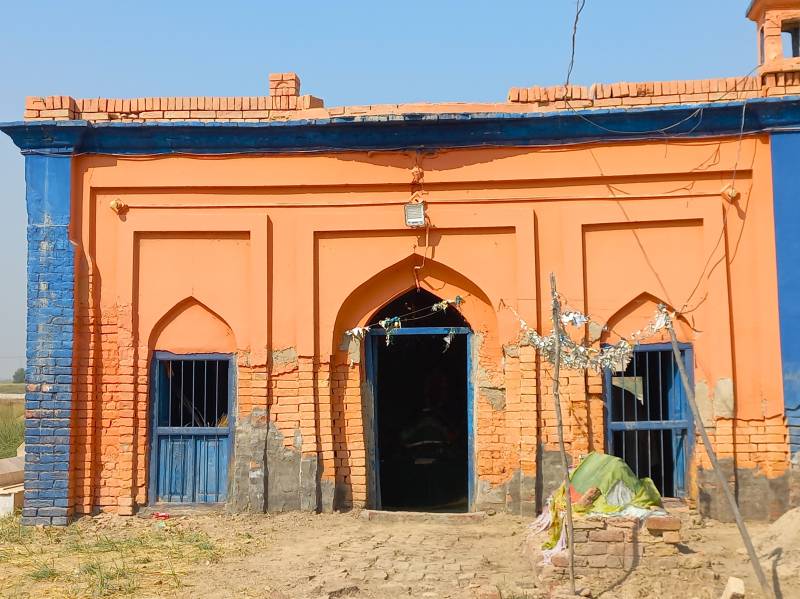
Maulana Noor Muhammad was a famous Islamic scholar and Sufi. Both Maulana Muhammad Yaqub Humayuni and Maulana Noor Muhammad studied in the madrassah of Maulana Abdul Haleem Kandvi at Kandi village in the Bhagnari area in Balochistan. Maulana Abdul Haleem Kandvi was a famous Islamic scholar and Qadiri Sufi of the Bhagnari area in Balochistan. It is also said that Maulana Abdul Haleem Kandvi was initiated into the Qadiri Sarwari silsila by Mian Muhammad Kamil Katbari (d 1824), who was himself a deputy of Mian Noor Ahmed. He died in 1254 / 1838 in Rohri and was buried there. Two prominent students of Maulana Abdul Haleem Kandvi, Maulana Muhammad Yaqub (d 1856) and Maulana Noor Muhammad Shahdadkoti, established Islamic religious schools (madrassahs) in Humayun Sharif and Shahdadkot, respectively. These religious institutions produced numerous distinguished Islamic scholars who founded madrassahs in their respective villages and towns, significantly transforming the religious landscape of Sindh and Balochistan.
The students of Maulana Noor Muhammad Shahdadkoti (d 1296/1879) from Sindh and Balochistan became leading scholars in their respective areas. Some of the eminent students of Maulana Noor Muhammad Shahdadkoti included Maulana Makhdoom Muhammad Qureshi, Maulana Noor Muhammad Bhatti, Mualana Haji Ahmad, Maulana Muhammad Hashim Soomro and others. Three sons of Maulana Noor Muhammad Shahdadkoti, i.e. Maulana Gul Muhammad (d 1888), Maulana Ghulam Siddique (d 1904) and Maulana Ghulam Umer (d 1886) were also celebrated scholars who studied under the guidance of their father.
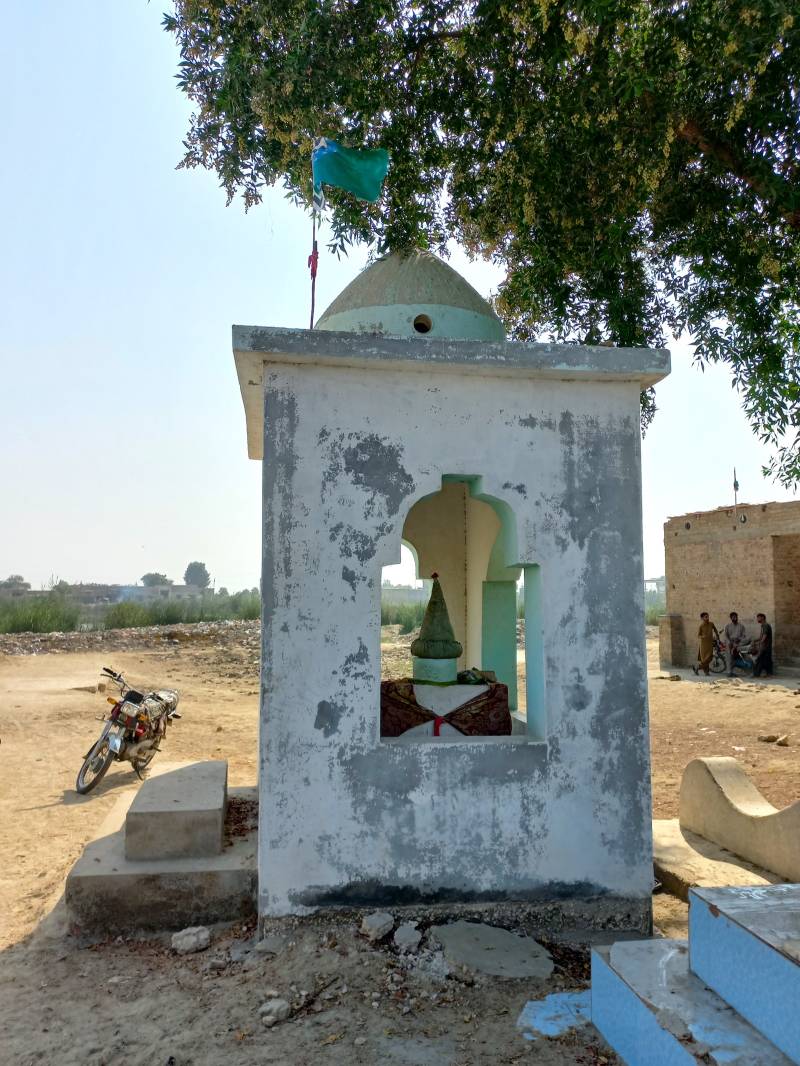
After completing his education at the madrassah of Maulana Noor Muhammad, Maulana Muhammad Hashim first established a madrassah at Bharmi village near Shahdadkot. According to Mahnama Shariat Sukkur, Sawaneh Hayat Number 1981, edited by Abdul Wahab Chachar, Maulana Taj Muhammad of Katbar Sharif took him to Katbar Sharif to educate his son, Mian Gul Hasan. Maulana Muhammad Hashim then taught his son there.
These scholars and Sufis established a library in Garhi Yasin that became renowned for its rare collections of books and manuscripts
Maulana Din Muhammad Wafai (1991:248) notes in Tazkira Mashaheer-e-Sindh that, later on, at the request of Asadullah Khan Raisanai, Maulana Muhammad Hashim was appointed Qazi of the Mohram Jagir in Balochistan. Due to the extreme heat and water scarcity in the region, Maulana Muhammad Hashim could only reside there for two years before returning to Sindh. Upon the request of Allah Bakhsh Khan Barakzai, a landlord of Garhi Yasin, Maulana Muhammad Hashim took on the role of in-charge of a mosque and Eidgah, during which he established a madrassah there. He spent most of his time teaching and reading in Garhi Yasin. He also established a library that contained rare collections of books. He was a scholar of Hadith, Fiqah and Fatwa Nawesi. Dr Nabi Bakhsh Baloch states in his article “Allama Muhammad Hashim Marhoom Garhi Yasini”, which was published in Mehran Sawaneh Number (1957[1990:53]), that Maulana Muhammad Hashim was initiated into Qadiri Sarwari silsila by Maulana Taj Muhammad Katbari (d 1892). Moreover, Dr Nabi Bakhsh Baloch (1957[1990:54]) believes that he was also a follower of Khwaja Abdur Rahman Jan Sarhandi (d,1898) and his son Khwaja Muhammad Hasan Jan Sarhandi (d 1948). The shrine of Khwaja Abdur Rahman Jan Sarhandi is located at Takhar Sharif near Hyderabad.
Many distinguished scholars are believed to have studied in his madrassah under his supervision. Some of Maulana Muhammad Hashim's eminent students included Maulana Karimdad (d 1937), Maulana Ghulam Muhammad, Maulana Abdullah Ratai (d 1918), Maulana Jamaluddin Sohbatpuri, Maulana Hafiz Noor Muhammad Garhi Yasini, Maulana Faqir Muhammad, Makhdoom Ghulam Mustafa, Molvi Inayat Agaro, Maulana Kamaluddin, and his son Maulana Muhammad Qasim Garhi Yasini.
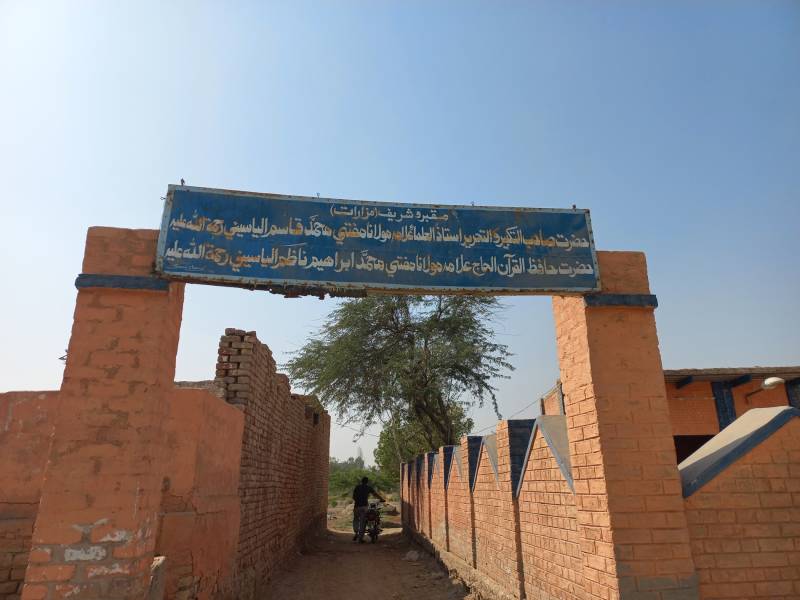
Maulana Muhammad Hashim died on 19 Shawal, 1322/ 26 December 1904, leaving behind three sons: Maulana Muhammad Saleh, Maulana Muhammad Qasim, and Maulana Muhammad Ibrahim. Maulana Muhammad Hashim was buried in the graveyard in Garhi Yasin. His eldest son, Maulana Muhammad Saleh, was a learned scholar. He died in Shahdadkot on 26 Jamada Al Awal 1363/ 18 May 1944 and was buried in a graveyard adjacent to Seelra Road. He left behind two sons: Mian Muhammad Bakhsh (d 1984) and Mian Abdul Bari alias Muhammad Musa (d 1990).
Maulana Muhammad Qasim, the second son of Maulana Muhammad Hashim, was an eminent Islamic scholar, Sufi, and author. He was born on 16 Rabi al- Akhir 1305/ December 31, 1887. He received preliminary education from his father, Maulana Muhammad Hashim and later studied in the madrassah of Humayun Sharif under the guidance of Maulana Abdul Ghafoor Humayuni. He was an eminent student of Maulana Muhammad Abdul Ghafoor Humayuni. It is said that after the death of his spiritual master, he became well-known for issuing Fatwas (verdicts) in northern Sindh and Balochistan.
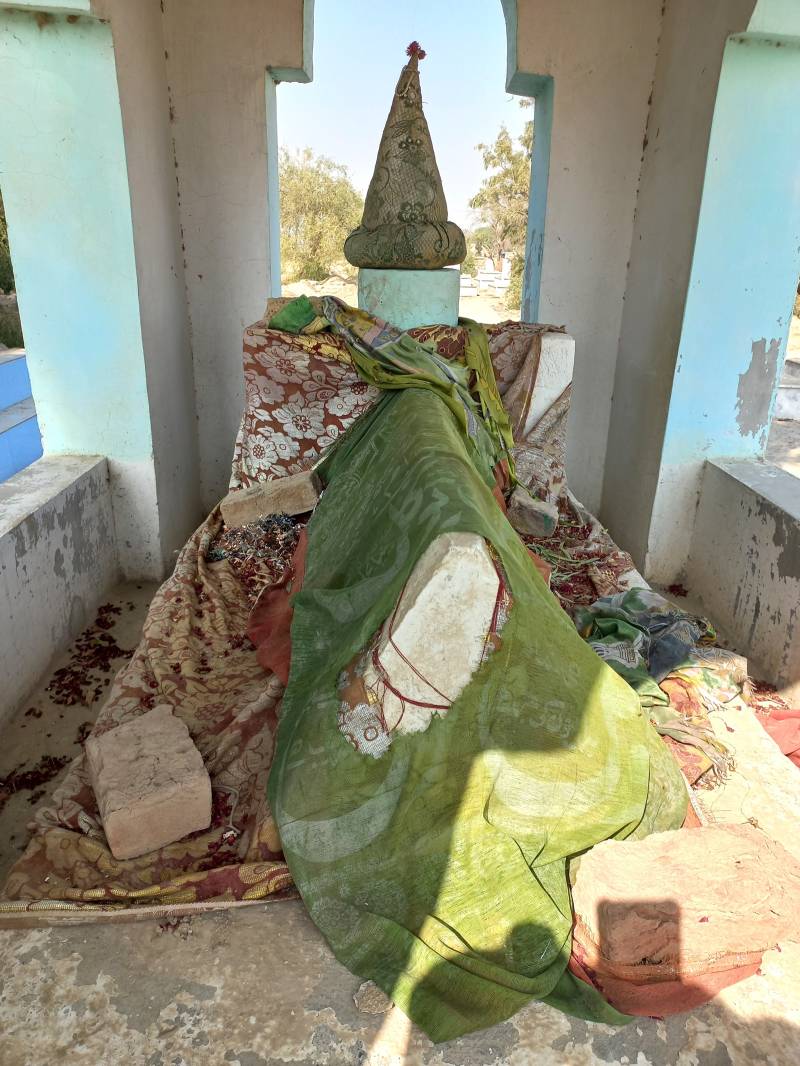
Dr Nabi Bakhsh Baloch writes in his article “Marhoom Allama Muhammad Qasim Garhi Yasini”, published in Mehran Quarter Sawanh Number (1957[1990]:118), that after completing his religious education at the madrassah of Allama Maulana Abdul Ghafoor Humayuni, he started teaching at the madrassah of his father at Garhi Yasin. Dr Nabi Bakhsh Baloch (1957[1990]) believes that many scholars studied in his madrassah and later established Islamic seminaries in their respective areas. Some of his prominent students included his brother Maulana Muhammad Ibrahim Garhi Yasini, Maulana Sahib Dad Khan (d 1965), Maulana, Ahmad Sahib Qazi of Makran, Maulana Wali Muhammad Sahib of Mithri in Balochistan, Molvi Abdul Haleem Sahib, Molvi Ghulam Siddique Sahib, Maulana Muhammad Hussain Sahib, Molvi Muhammad Hussain Sahib Makrani, Maulana Sahib Dino Qarni, Molvi Abdur Rahman Sahib, Molvi Fazal Muhammad Waiz Garhi Yasini and others. His students preached in different parts of Sindh and Balochistan.
Maulana Muhammad Qasim was a poet, writer, scholar and Sufi. He authored many books. He wrote books on theology and Sufism in Sindhi, Persian, and Arabic. Some of his books have been translated and published. In 2007, Asif Mehmood Qadiri translated Umdatul Asar Fi Tazkar e akhiyar Al-Katbar, a Persian manuscript on Qadiri Sufi saints of Katbar Sharif, into Urdu as Tazkira Mashaaikh e Katbar Sharif.
Maulana Din Muhammad Wafai (1991:257) states in Tazkira Mashaheer-e-Sindh that Maulana Muhammad Qasim died at the age of 44 on 17 Dhul-Qadah 1349/ April 5, 1931, and was buried in Garhi Yasin in the same graveyard where his father's grave was located. After his death, his brother Maulana Muhammad Ibrahim succeeded him in managing the madrassah and continued to teach students at the madrassah Qasimia. He first received his early education from his father, Maulana Muhammad Hashim, and later completed his education under the supervision of his brother, Maulana Muhammad Qasim.
It is said that Molvi Abdul Baqi (d 1963), grandson of Maulana Abdul Gahfoor Humayuni (d 1918), studied under the guidance of Maulana Muhammad Ibrahim, from which he had to stay in Humayun Sharif until the completion of Molvi Abdul Baqi’s education.
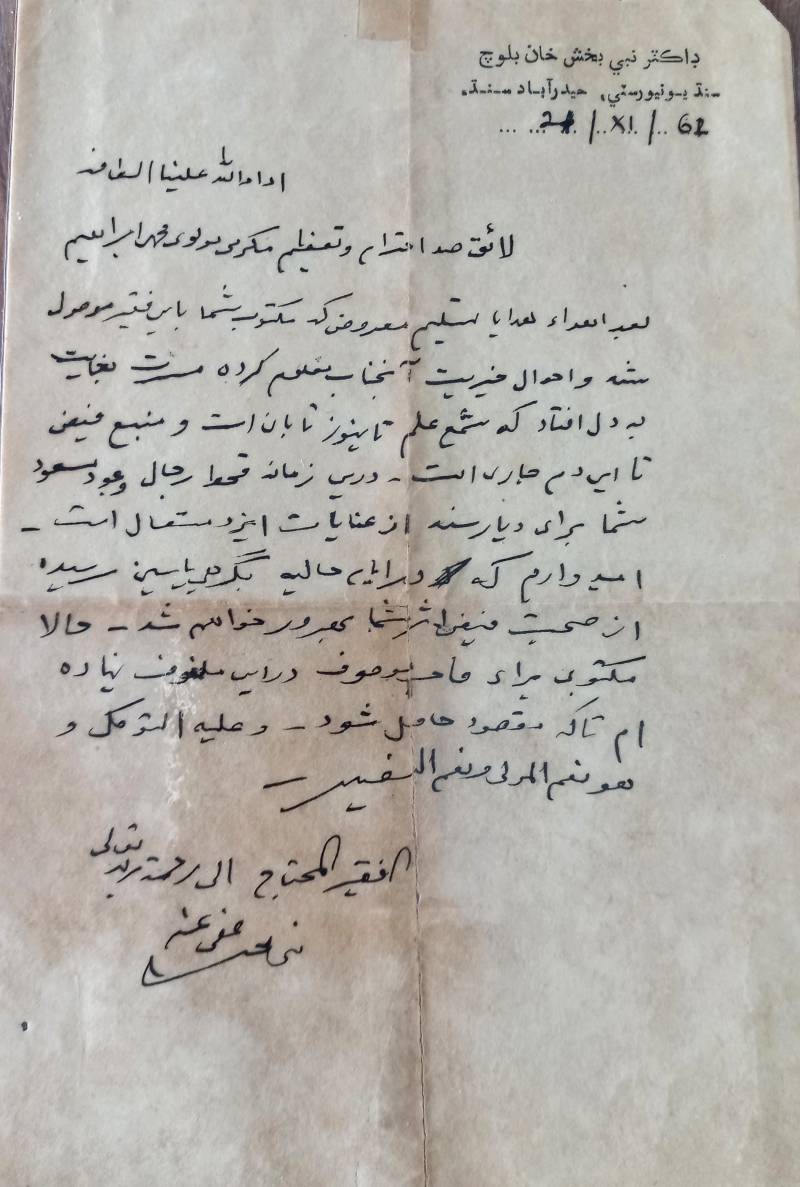
Maulana Muhammad Ibrahim was a scholar, writer and Sufi. He wrote several books. Many scholars studied under his guidance and later established madrassahs in their respective areas.
According to Anwar-e-Ulama-e-Ahle Sunnat Sindh by Sahibzada Syed Muhammad Zain ul Abidin Shah Rashidi (2006:810), Maulana Muhammad Ibrahim had one son named Haji Muhammad Ahsan Soomro, who died in 1960 during his lifetime. Maulana Muhammad Ibrahim died in 1964 and was succeeded by Maulana Najamuddin. Maulana Muhammad Ibrahim was the maternal uncle of Maulana Najmuddin. Maulana Nizamuddin, son of Mian Imam Bakhsh, studied in the madrassah Qasimia under the supervision of Maulana Muhammad Qasim and completed his education under the guidance of Maulana Muhammad Ibrahim. He was also a noted Islamic scholar.
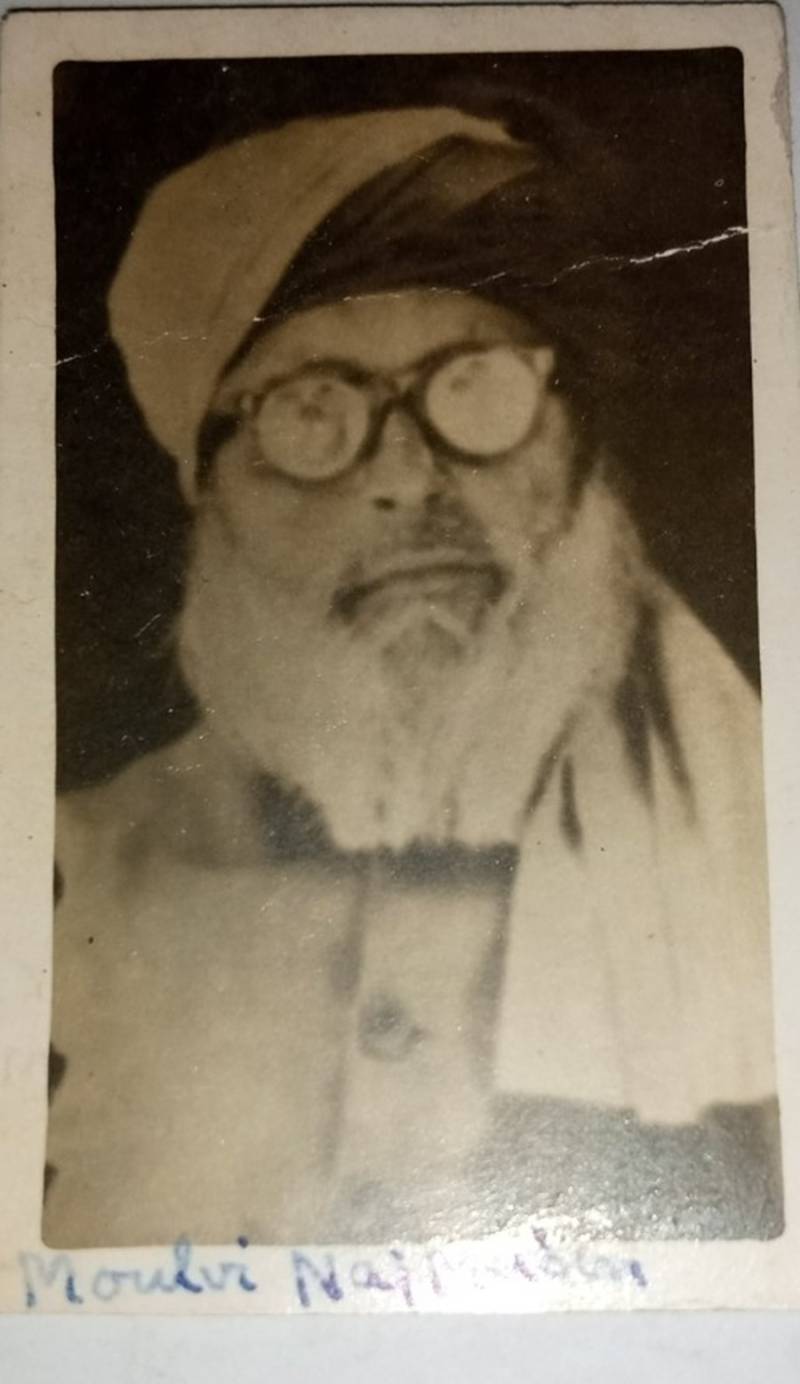
He died in 1979 and was succeeded by his son, Maulana Muhammad Qasim Sani, who continued to manage and teach in the madrassah Qasimia. Maulana Muhammad Qasim Sani died in 2016, leaving behind three sons: Mian Muhammad Saalim Jan Hashimi, Maulana Mian Khalil Ahmad Hashimi, and Mian Jamil Ahmad Hashimi. Now, the madrassah Qasimia is managed by his son, Maulana Mian Khalil Ahmad Hashimi, who is also Gadi Nashin of the Dargah of Maulana Muhammad Hashim, Maulana Muhammad Qasim and Muhammad Ibrahim.
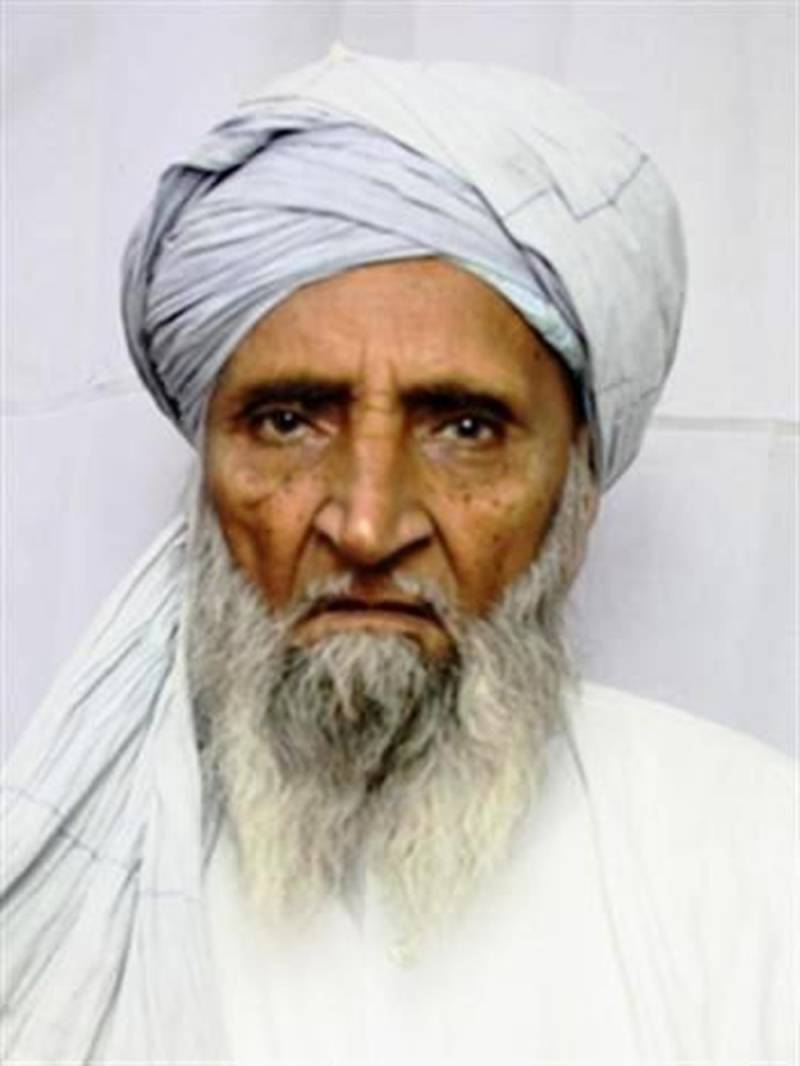
These scholars and Sufis established a library in Garhi Yasin that became renowned for its rare collections of books and manuscripts. This library contained letters addressed to the descendants of Maulana Muhammad Hashim, including correspondence from various scholars, tribal chiefs, and politicians. Notably, there was a letter from Dr NA Baloch, which he wrote in Persian in 1962 to Maulana Muhammad Ibrahim.

